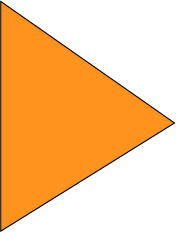Step 6: Reporting & Graphics
Data Box Maps
You will learn how to create and customize your unlimited number and variations of data box maps. Customized with the chemicals you want, the dates you want, the locations you want, all compared to the clean-up criteria you want, including site-specific criteria you may have developed for your project.

Groundwater Flow Contours
Groundwater contours have never been developed faster and with more ease. We will show you how to create different maps for different needs and/or aquifers and how to turn data points off and on, how to save your settings, and how to change contour intervals for your specific data story you are trying to tell.

Iso-Chemical Contours
Iso-chemical is also developed quickly and easily. Again, we will show you how to create different maps for different needs, different chemicals, and different spills/plumes if needed. We will show you how to turn data points off and on, how to save your settings, and how to change contour intervals for the iso-chemical story you are trying to tell.

Free Product Contours
Free product thickness contours can also be contoured simply and easily. Again, turn data points off and on and save your settings so that future reports can be completed even quicker. LNAPL or DNAPL product plumes, they can both be done quickly and easily.

Analytical Graphs
You will learn how to graph your analytical data quickly and simply in seconds. Pick your locations, pick your chemicals, pick your dates, then generate your graphs in seconds.

Groundwater Elevation Graphs
You will learn how to graph your groundwater elevations relative to the monitoring well-screened interval. This is useful when looking for DNAPL relative to the screened interval. This visual shows you proper placement for your specific purpose.

Combination Graphs
This graph is particularly useful when graphing groundwater elevation and contaminant concentration on the same graph. Correlation of groundwater elevation to contaminant levels helps visualize and analyze possible causes and effects of contaminant fluctuation.

Field Data Graphs
You will learn how to graph your field data quickly and simply in seconds. Pick your locations, pick your parameters, pick your dates, then generate your graphs in seconds.

Analytical Data Tables and Field Data Tables
Customized with the chemicals you want, the dates you want, the locations you want, all compared to up to 3 different clean-up criteria you select, including site-specific criteria you may have developed for your project.

Combining Multiple PDF Files Into One
We will teach you how to combine all your separate graphics into one large PDF for export.


